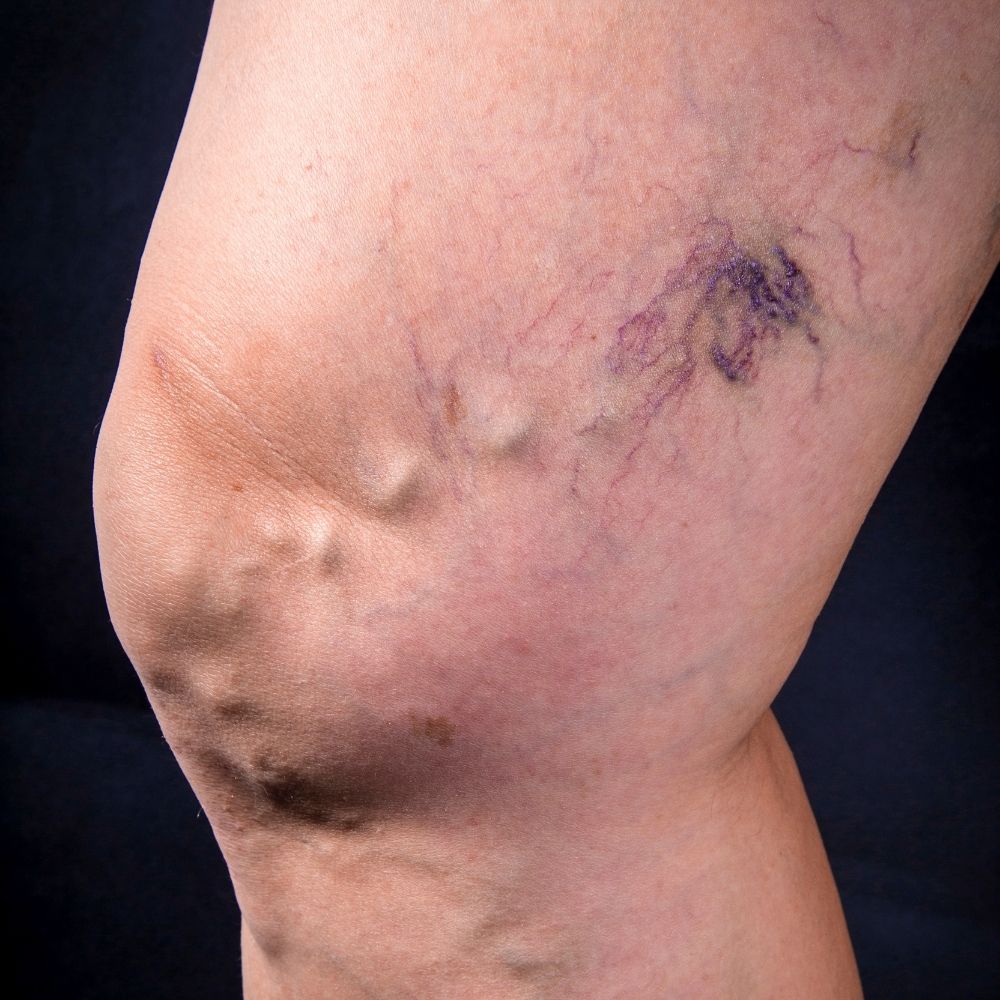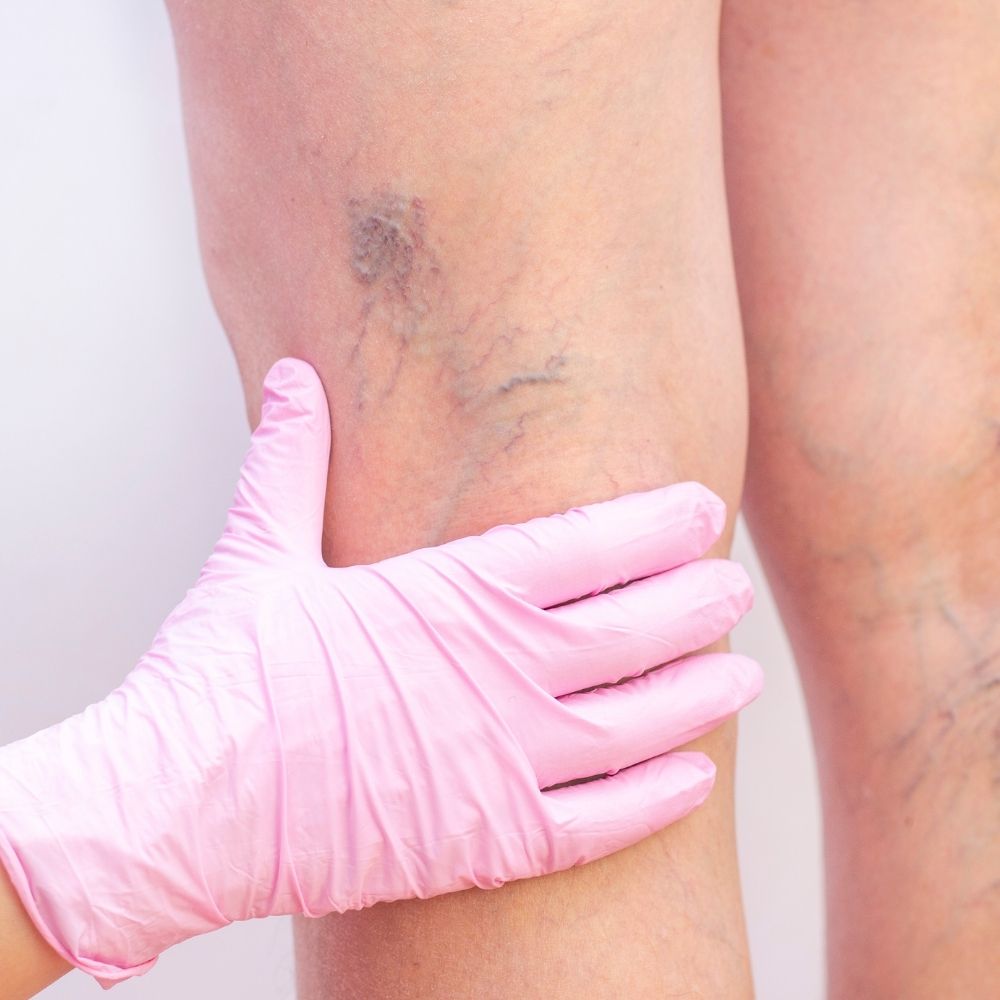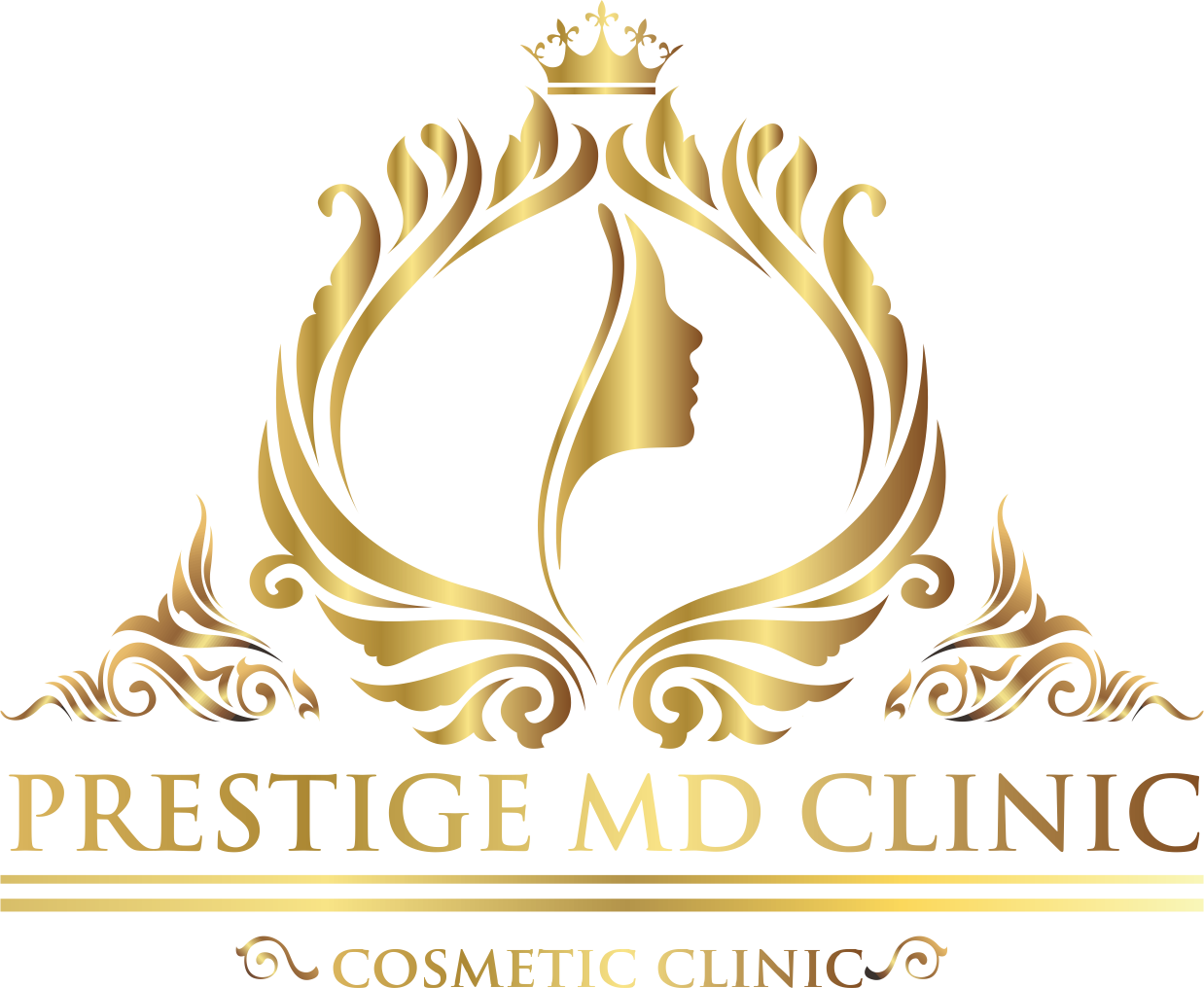vein removal
what is the purpose of vein removal procedure?
Varicose veins and spider veins can be caused by damaged veins. They develop when the tiny, one-way valves within the veins become weaker. These valves push blood back towards our heart in healthy veins. These valves can become weaker and blood flows backward, accumulating in the vein. The vein walls are put under pressure by the extra blood.
The vein walls will bulge and weaken under constant pressure. We will eventually see a varicose vein or spider vein.
These veins are more common in some people than others. You are more likely to develop them if you have relatives with them. They are common in people who sit or stand for extended periods of time most days of the year. These veins are also more common as we age and become pregnant.
Sunlight, hormonal changes, or injury can also cause spider veins.

possible treatments for leg veins
The stockings provide steady pressure to move blood back to the heart. This steady pressure reduces swelling in the lower legs and decreases the chance of developing a blood clot. However, visible leg veins will still be present.
A dermatologist can help you determine the right size and pressure for your compression stockings.
This is the most popular treatment for leg veins. Dermatologists have made sclerotherapy safer over the years and given better results to patients. Dermatologists use it today to treat small and spider veins.
This is what happens during sclerotherapy.
The dermatologist injects a chemical in the spider vein or varicose vein to irritate the vein wall. Injections are made in different areas of the vein.
Your dermatologist will massage the area after the injections are completed.
The leg is then covered with a compression stocking.
After being observed, you will be allowed to return home.
You will need to walk every day and wear the compression stockings according to instructions in order not to have side effects. The compression stockings are worn by most patients for approximately 2 to 3 weeks.
You can go back to work or most other activities the next day.
The walls of the vein become stuck together by sclerotherapy, which prevents blood from flowing through them. This increases circulation and decreases swelling.
Spider veins are usually gone in three to six weeks. Varicose veins can take up to four months.
You may need to do two or three treatments in order to get the best results. These treatments can be performed by a dermatologist during an office visit. These treatments are performed without the need for anesthesia.
Lasers are used by dermatologists to treat small varicose and spider veins. Your dermatologist will direct the laser light to the vein during laser treatment.
Treatment may make small spider veins disappear quickly. You may see larger spider veins or varicose veins for up to three months before they disappear. You may need to have 3 or more treatments in order to achieve complete clearing.
Patients can usually return to work the next day and resume their usual activities.
Some patients will need compression stockings after each treatment.
Each patient will need protection from the sun for three to four weeks. This prevents dark spots from forming. You can prevent skin cancer and new spider veins by protecting your skin all year.
Endovenous Laser Therapy (EVLT), and Radiofrequency Ablation are both newer treatments. These treatments often replace the need for surgically removing a vein.
Both treatments are used to treat the vein. EVLT is used by dermatologists to treat small varicose and spider veins. RFA is used for large varicose vessels.
This is what happens during these treatments.
Local anesthesia is used to numb the area being treated. You may also experience swelling due to the anesthesia.
The dermatologist will then make a small incision to insert a laser fiber (for EVTLT) or a catheter (for RFA).
The laser or radiofrequency device activated by your dermatologist heats the vein, causing it collapse and to seal shut. The heat doesn’t cause any harm to the surrounding areas.
After treatment, each leg will be fitted with a compression stocking.
After being observed, you are allowed to return home.
You will need to walk every day and wear the compression stockings according to instructions in order not to have side effects. The compression stockings are usually worn for between 1 and 2 weeks by most patients.
You can go back to work or most other activities the next day.
The treatment of the vein with RFA and EVLT takes approximately one year. You may need to have more than one treatment in order to get the best results.
self-care tips for preventing varicose & spider veins
There are many treatment options, from minor surgery to self-care. These treatments may be used by a dermatologist:
For self-care your dermatologist can give you tips for improving your circulation. They are as follows:
Exercise
Elevate your legs
Do you want to sit for prolonged periods of time? Every 30 minutes, get up and walk around.
Do you want to stand for prolonged periods of time? Every 30 minutes take a break
Do not soak in hot baths for prolonged periods of time

Frequently asked questions
Varicose veins look similar to spider veins but are smaller and more visible below the skin’s surface. Telangiectasia, or spider veins, is the term for dilated and extended veins beneath the skin. Varicose veins are elongated and dilated veins that lie below the skin.
- Spider veins are small in diameter, have red, purple or bluish colors, and resemble a Web.
- Varicose Veins are larger and deeper veins that can protrude. This results in a rope-like appearance.
This is the most popular treatment for leg veins. Dermatologists have made sclerotherapy safer over the years and given better results to patients. Dermatologists use it today to treat small and spider veins.
This is what happens during sclerotherapy.
The dermatologist injects a chemical in the spider vein or varicose vein to irritate the vein wall. Injections are made in different areas of the vein.
Your dermatologist will massage the area after the injections are completed.
The leg is then covered with a compression stocking.
After being observed, you will be allowed to return home.
You will need to walk every day and wear the compression stockings according to instructions in order not to have side effects. The compression stockings are worn by most patients for approximately 2 to 3 weeks.
You can go back to work or most other activities the next day.
The walls of the vein become stuck together by sclerotherapy, which prevents blood from flowing through them. This increases circulation and decreases swelling.
Spider veins are usually gone in three to six weeks. Varicose veins can take up to four months.
You may need to do two or three treatments in order to get the best results. These treatments can be performed by a dermatologist during an office visit. These treatments are performed without the need for anesthesia.
These same factors can lead to varicose or spider veins. You are more likely to develop other vein conditions. Although a particular vein will not recur if it is treated properly, it is possible for other veins to become diseased. Even if your spider veins appear to be cosmetic, it is important to consult a vein specialist. They can help you determine if there is an underlying condition called vein reflux. If you don’t address the root cause, you could develop more spider veins and varicose veins.
Venous reflux, an underlying condition that causes pressure and blood backflow in the lower legs can lead to a progressive condition. This condition will only get worse over time. This can cause more spider veins or varicose and, in some cases, can result in swelling and venous infections at the ankle and lower calf. Your spider veins and varicose can be effectively evaluated by a trained vein specialist.
Varicose veins cannot be prevented. However, certain actions can help to limit its progression and symptoms. Varicose vein symptoms can be relieved by routine exercise, maintaining a healthy weight, sitting down for long periods, and wearing compression stockings.

